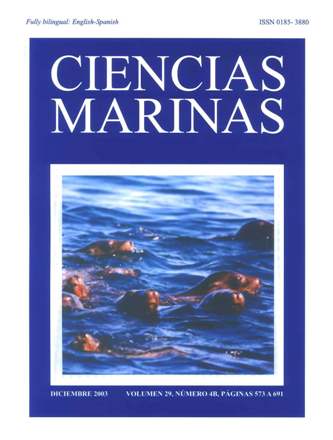Biochemical composition of nauplii and metanauplii of Artemia sp. (Crustacea, Anostraca) from the Araya saltworks, northeastern Venezuela
Main Article Content
Abstract
In this work, we compared the proportion of proteins, lipids, carbohydrates and fatty acids in populations of Artemia sp. from the Araya saltworks in northeastern Venezuela, during two stages (nauplii and metanauplii) of their development. The population of Artemia franciscana from San Francisco Bay (USA) was used as reference because of its wide use in aquaculture. The organisms of both populations showed significant differences in protein, lipid, carbohydrate and phospholipid contents between both stages; however, no significant differences were established between both populations. The highest protein concentrations were found in metanauplii: 67% for Araya and 56% for San Francisco. The highest concentrations of lipids (22% and 24%), carbohydrates (17% and 11%) and phospholipids (26% and 35%) were found in nauplii for both populations. Cholesterol esters, cholesterol, triglycerids, and n-3 and n-6 fatty acids were significantly different between stages and between populations. Cholesterol esters, and n-3 and n-6 fatty acids were higher in San Francisco metanauplii, with values of 37%, 11% and 7%, respectively. The highest triglycerid concentration (39%) was found in San Francisco nauplii and the highest cholesterol concentration in Araya metanauplii (50%). The results suggest that the Artemia population from the Araya saltworks contains the necessary elements to cover the nutritional requirements of fish larvae and marine crustaceans under culture.
Downloads
Article Details
This is an open access article distributed under a Creative Commons Attribution 4.0 License, which allows you to share and adapt the work, as long as you give appropriate credit to the original author(s) and the source, provide a link to the Creative Commons license, and indicate if changes were made. Figures, tables and other elements in the article are included in the article’s CC BY 4.0 license, unless otherwise indicated. The journal title is protected by copyrights and not subject to this license. Full license deed can be viewed here.

